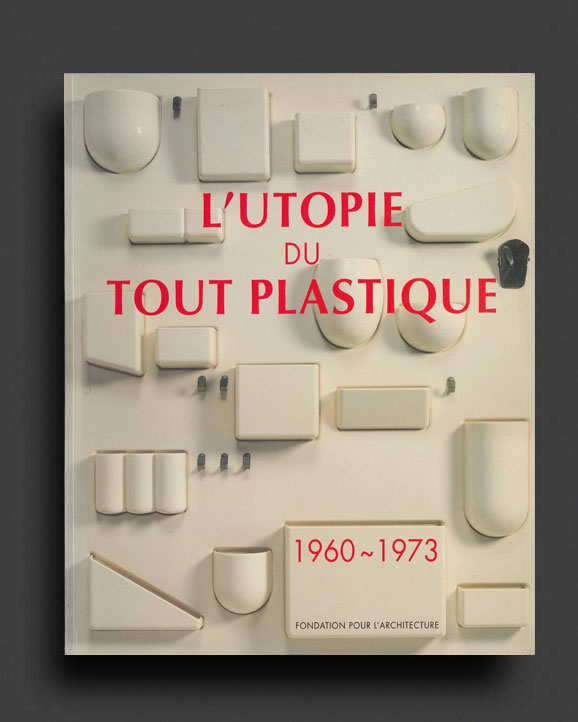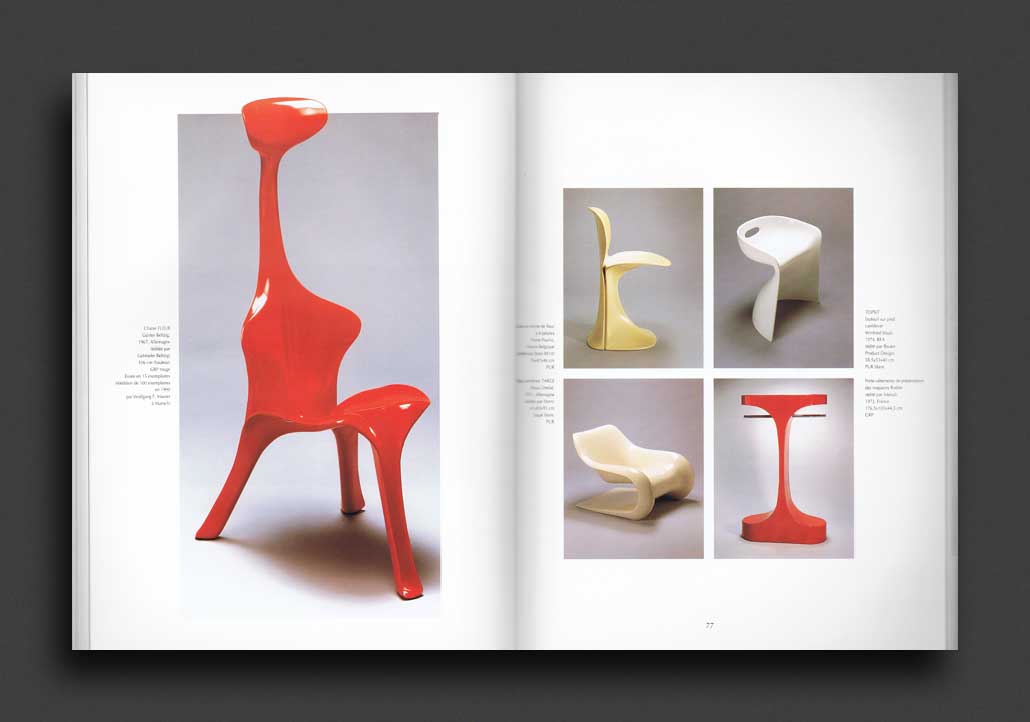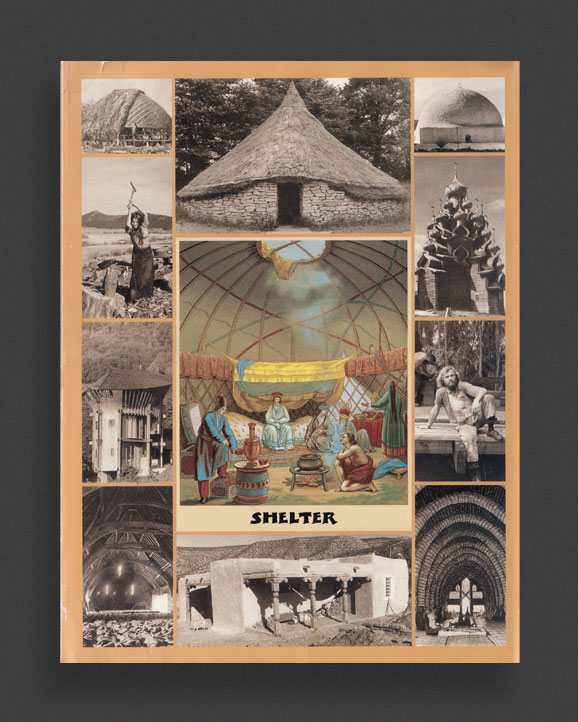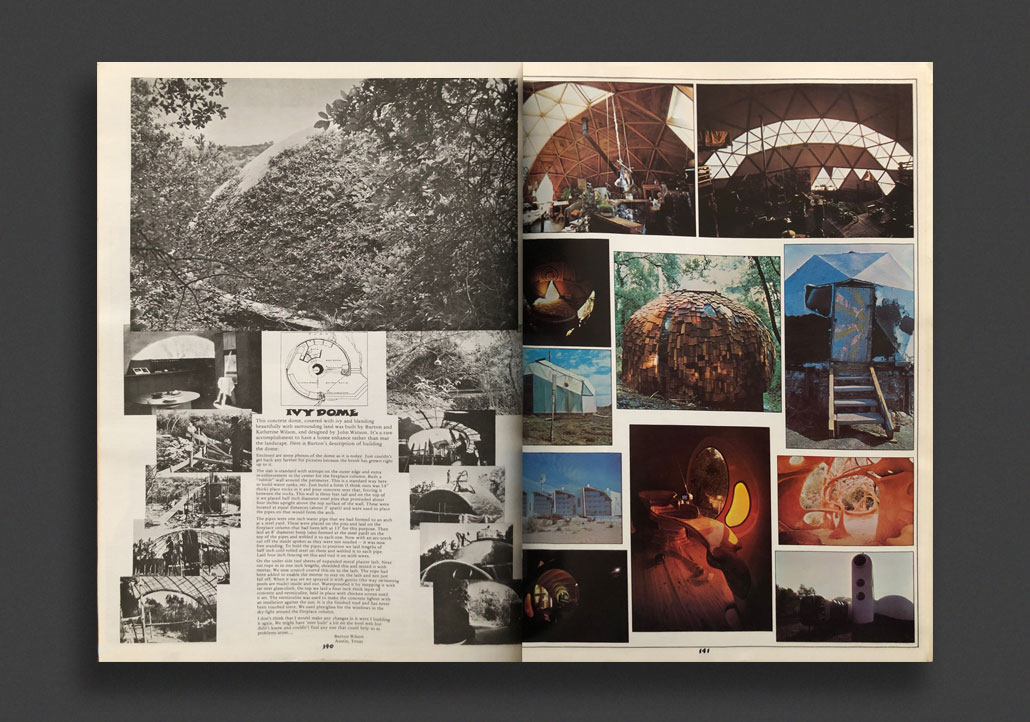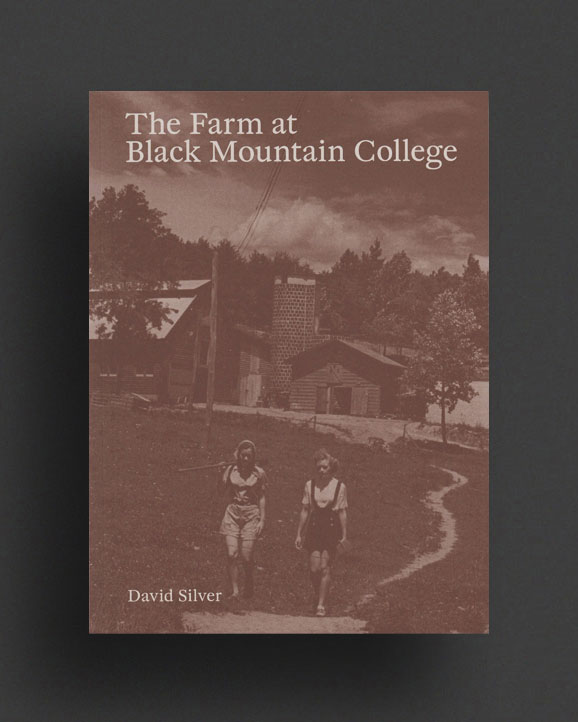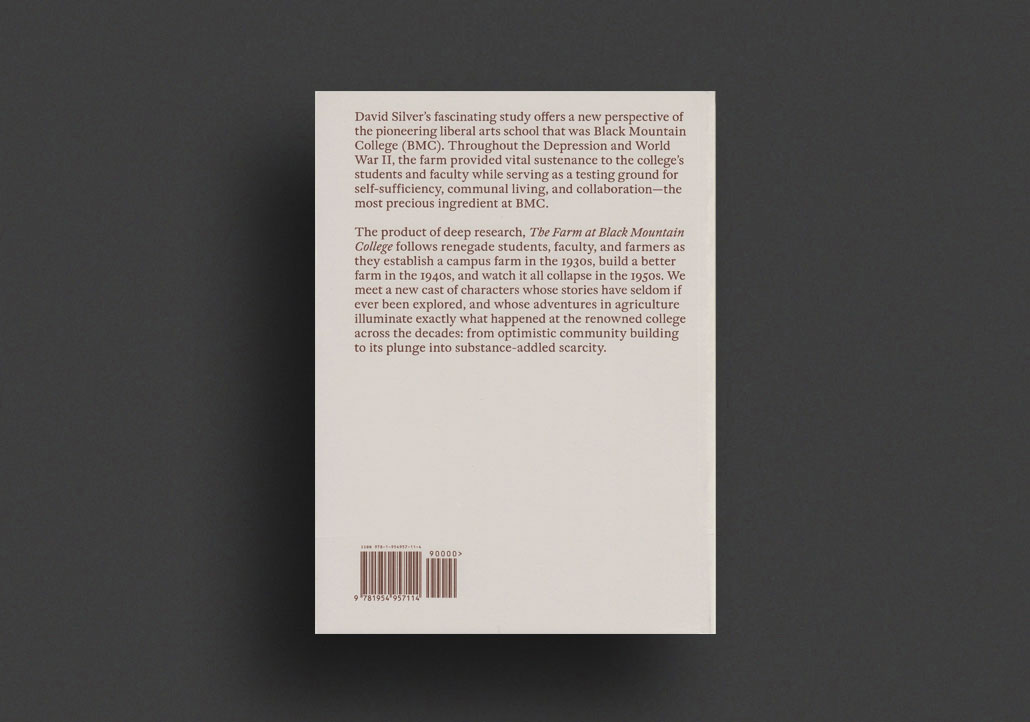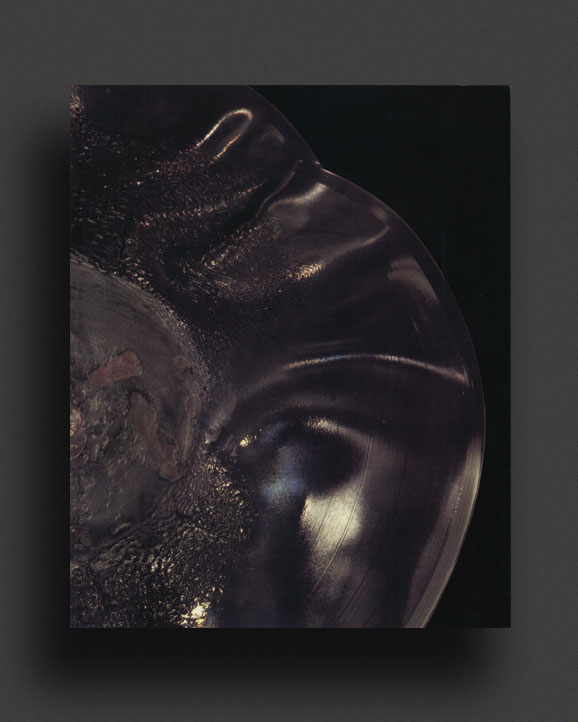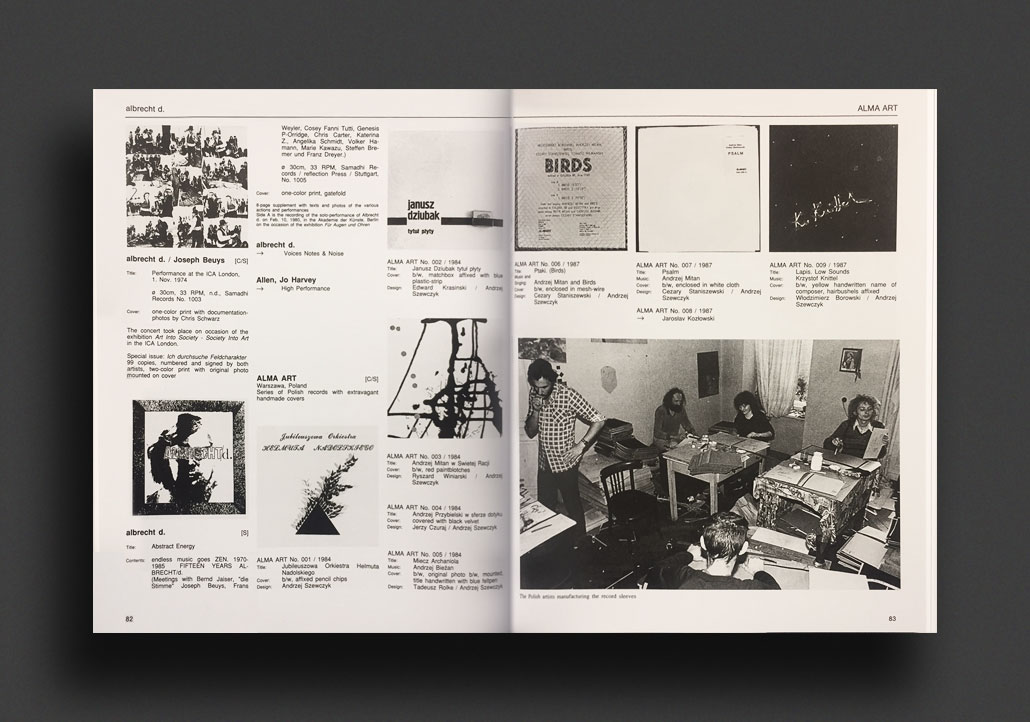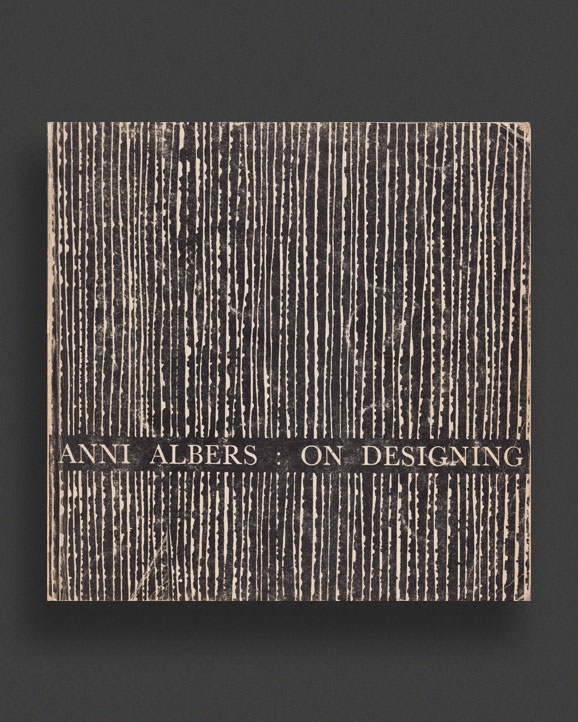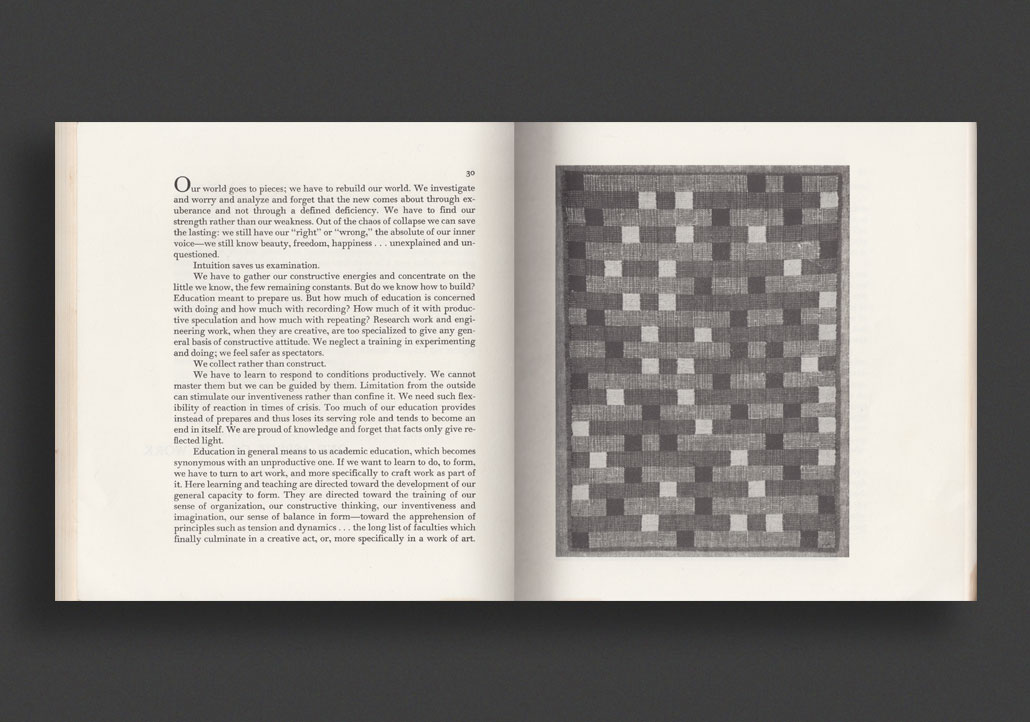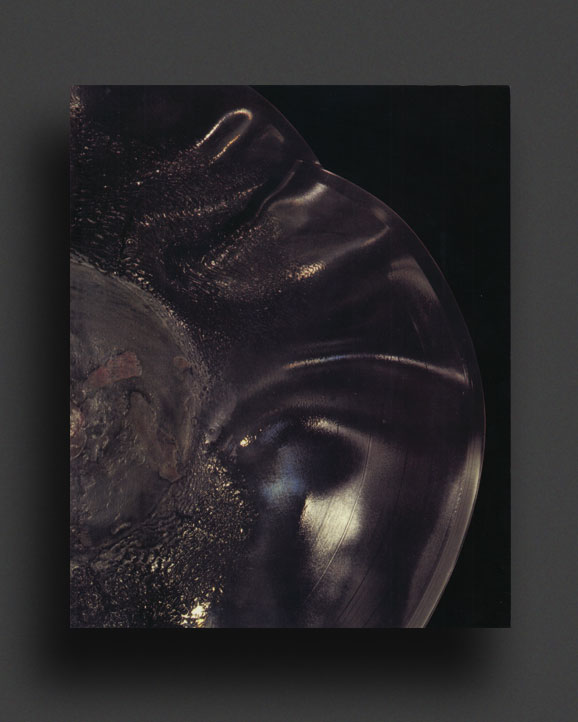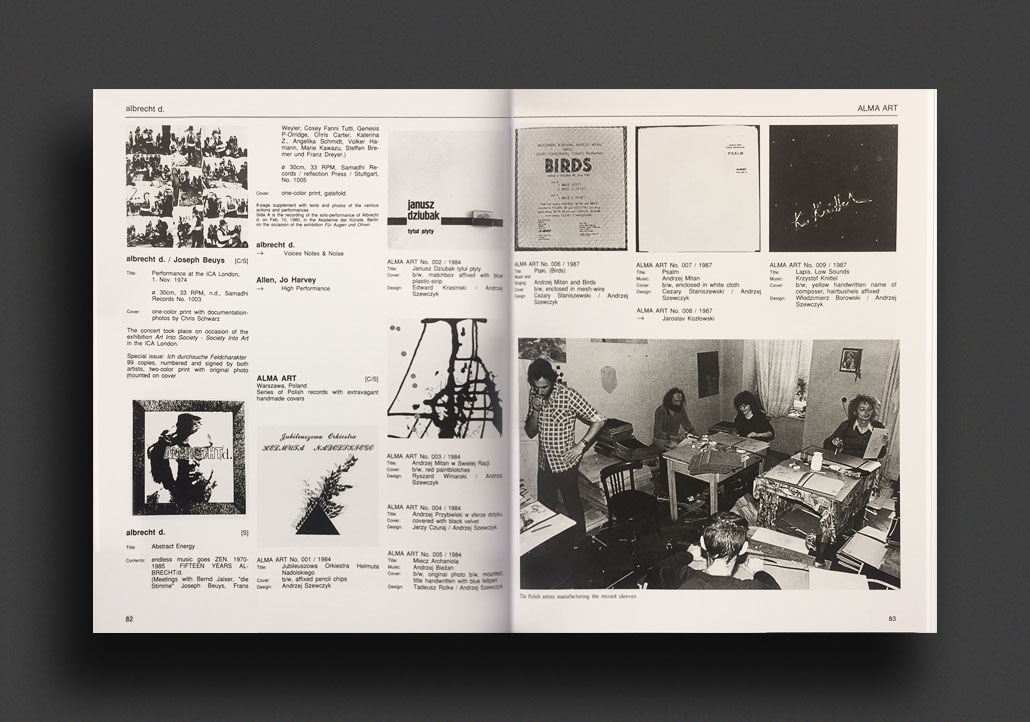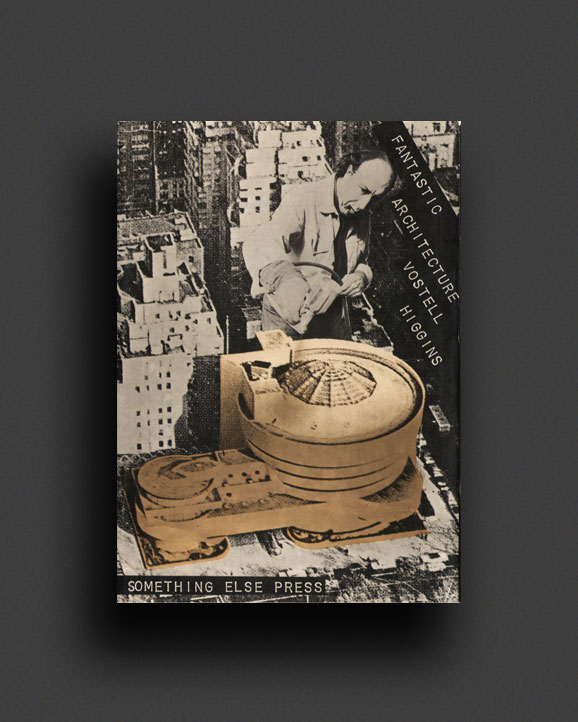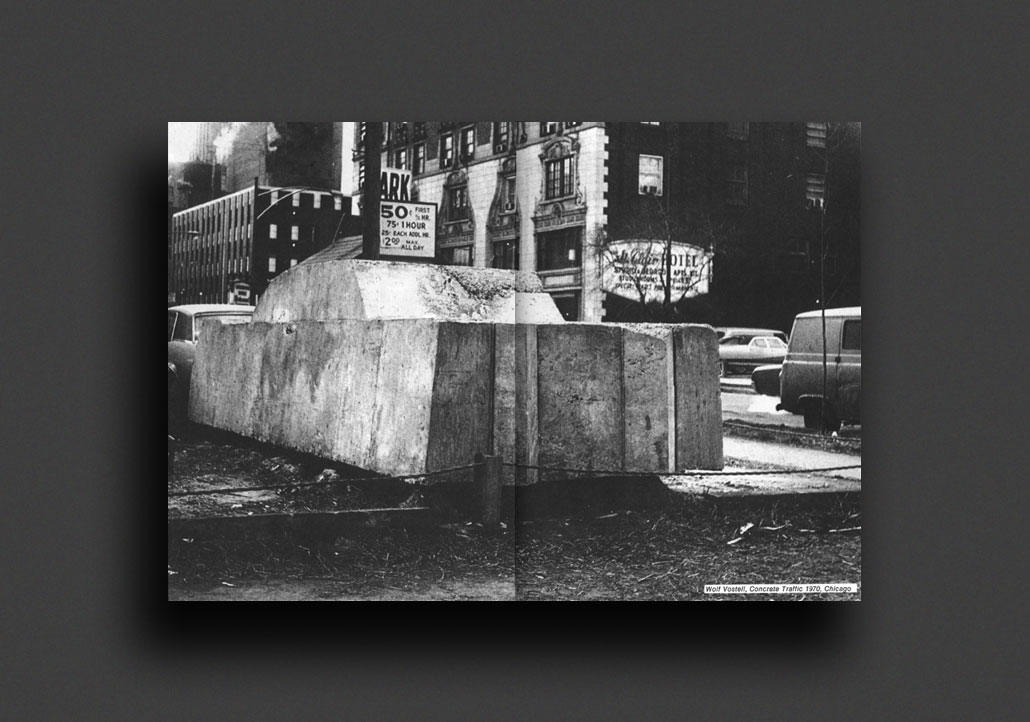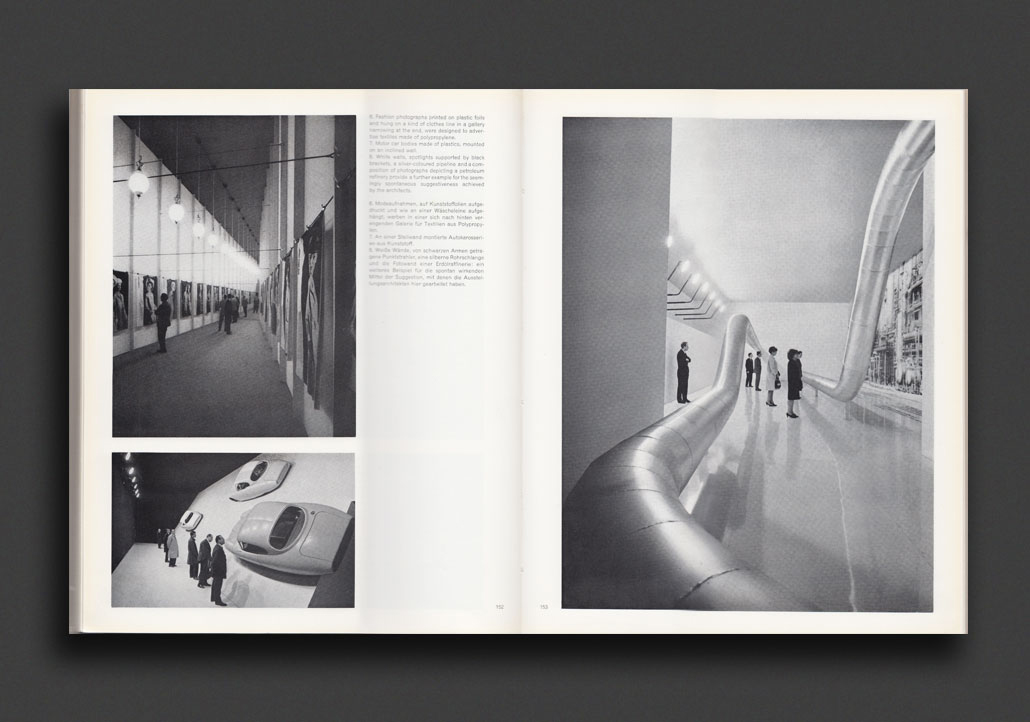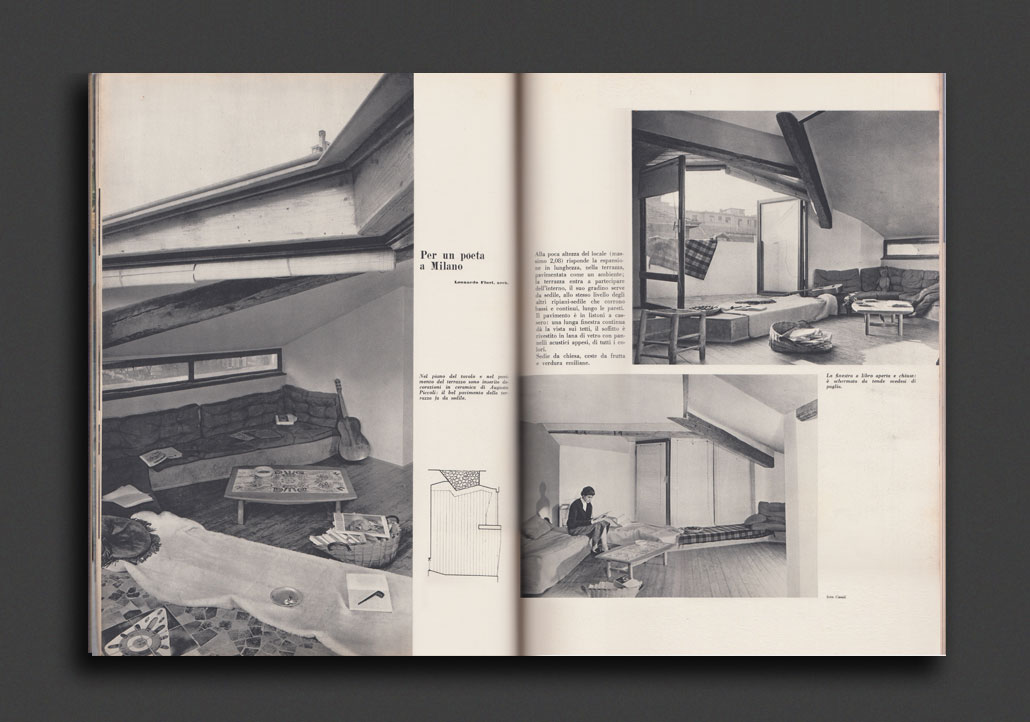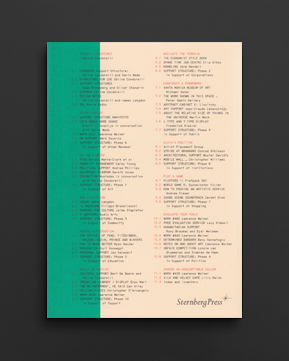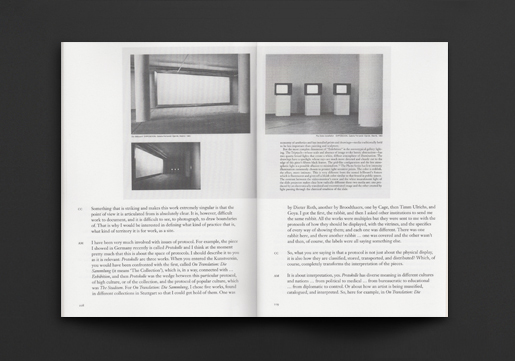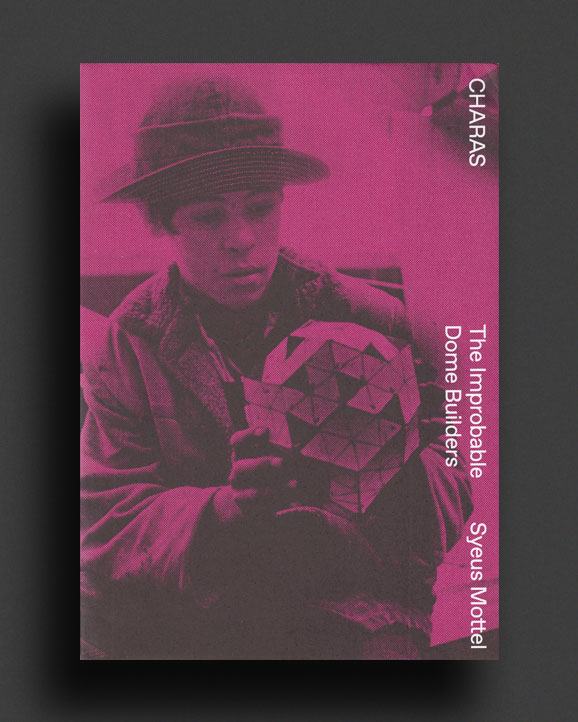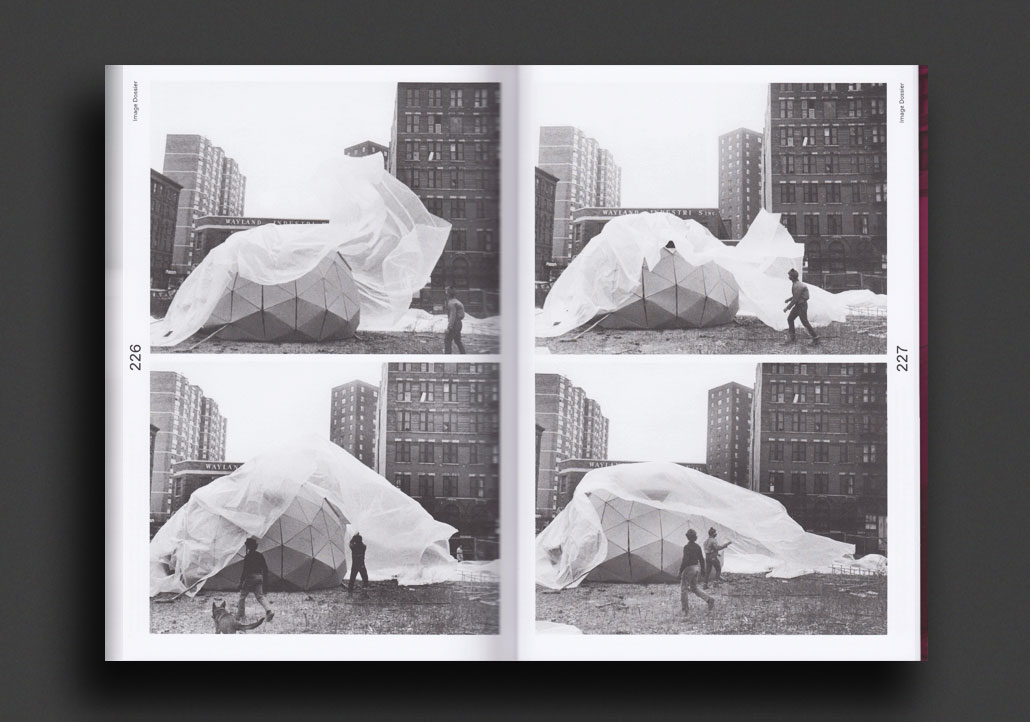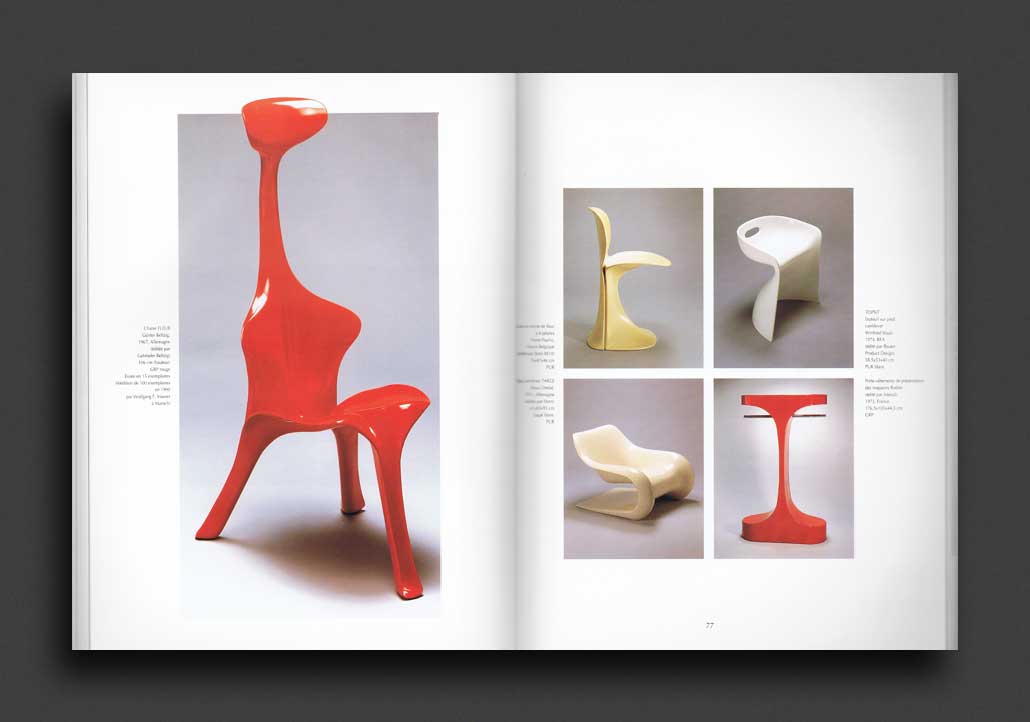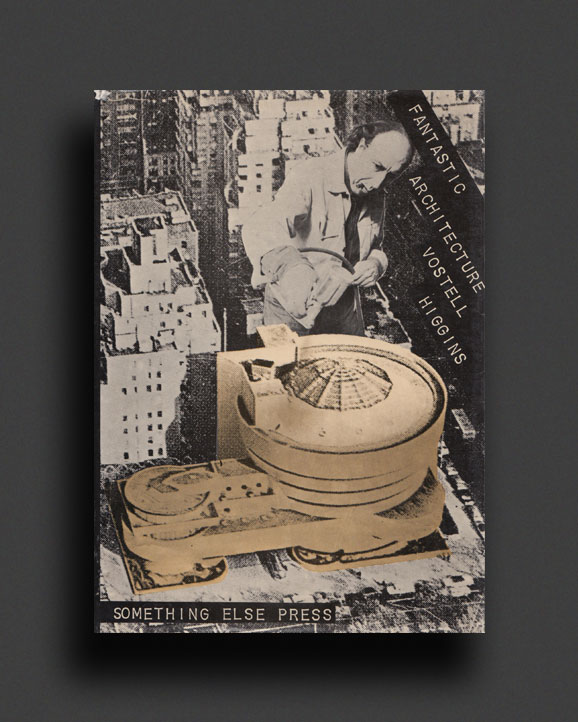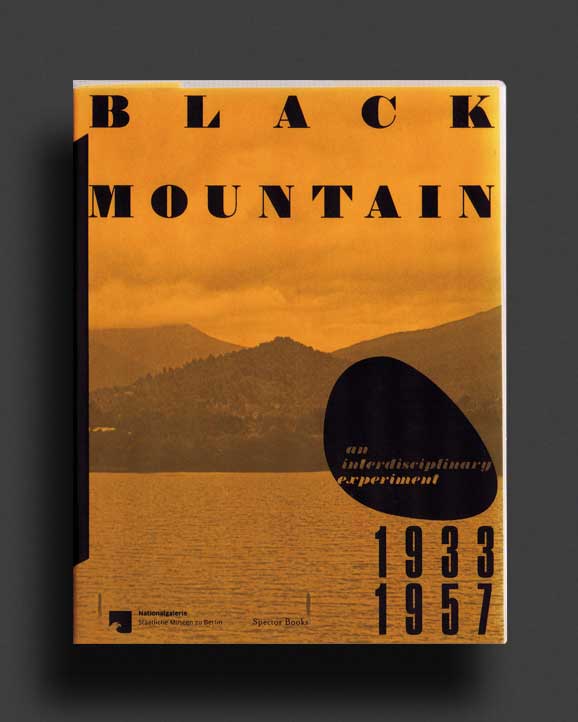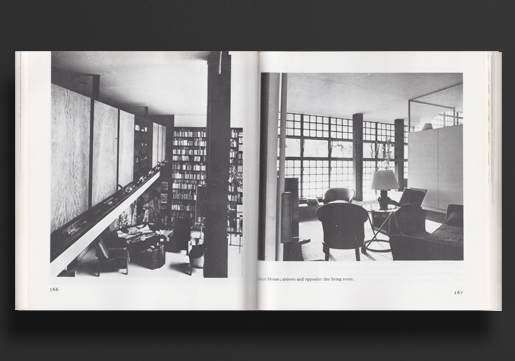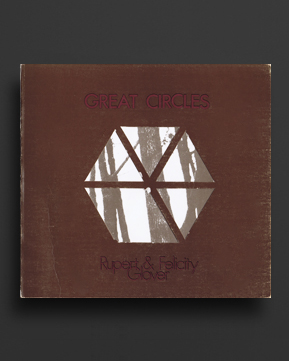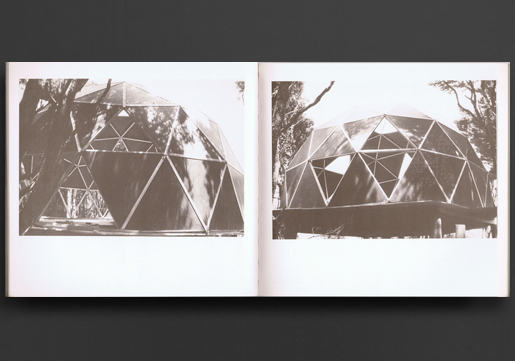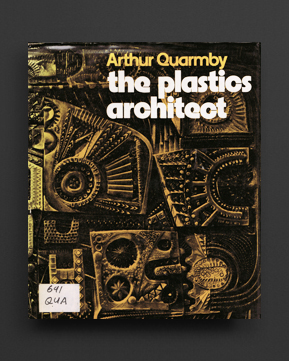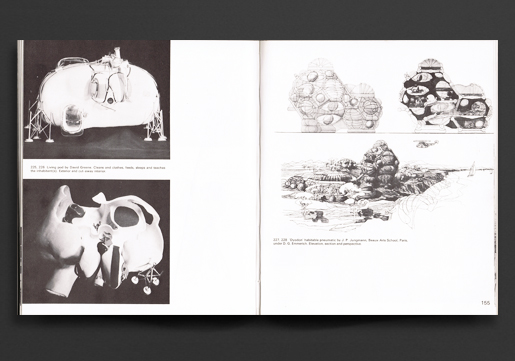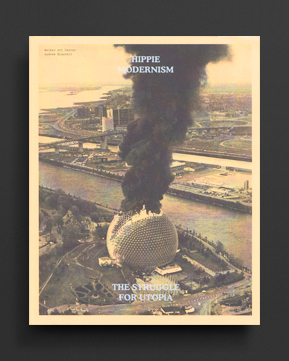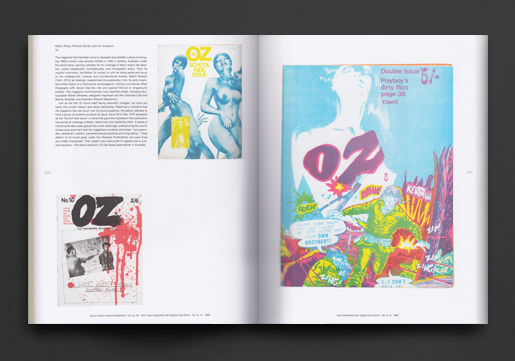(...less)
Rare first 1989 edition of Broken Music, an essential compendium for records created by visual artists. Complete with original flexi-disc. The publication was edited by Ursula Block and Michael Glasmeier and published in 1989 by DAAD and Gelbe Musik, Berlin. Broken Music focuses on recordings, record-objects, artwork for records, and record installations made by thousands of artists between WWII and 1989.
It also includes essays by both editors as well as Theodor W. Adorno, René Block, Jean Dubuffet, Milan Knizak, László Moholy-Nagy, Christiane Seiffert, and Hans Rudolf Zeller, as well as a flexi disc of the Arditti Quartet performing Knizak’s “Broken Music.” The centerpiece of the publication is a nearly 200-page bibliography of artists’ records.
Works chosen for the publication revolved around four criteria: (1) record covers created as original work by visual artists; (2) record or sound-producing objects (multiples/editions/sculptures); (3) books and publications that contain a record or recorded-media object; and (4) records or recorded media that have sound by visual artists.
Artists documented in the volume include Vito Acconci, albrecht/d., Laurie Anderson, Guillaume Apollinaire, Karel Appel, Arman, Hans Arp, Antonin Artaud, John Baldessari, Hugo Ball, Claus van Bebber, John Bender, Harry Bertoia, Jean-Pierre Bertrand, Joseph Beuys, Mel Bochner, Claus Böhmler, Christian Boltanski, KP Brehmer, William Burroughs, John Cage, Henri Chopin, Henning Christiansen, Jean Cocteau, William Copley, Philip Corner, Merce Cunningham, Hanne Darboven, Jim Dine, Marcel Duchamp, Max Ernst, Lawrence Ferlinghetti, Fischli and Weiss, R. Buckminster Fuller, Allen Ginsberg, Philip Glass, Jack Goldstein, Peter Gordon, Hans Haacke, Richard Hamilton, Bernard Heidsieck, Holger Hiller, Richard Huelsenbeck, Isidore Isou, Marcel Janco, Servie Janssen, Jasper Johns, Joe Jones, Thomas Kapielski, Allan Kaprow, Martin Kippenberger, Per Kirkeby, Cheri Knight, Milan Knizak, Richard Kriesche, Christina Kubisch, Laibach, John Lennon, Sol Lewitt, Roy Lichtenstein, Annea Lockwood, Paul McCarthy, Meredith Monk, Josef Felix Müller, Piotr Nathan, Hermann Nitsch, Albert Oehlen, Frank O’Hara, Claes Oldenburg, Yoko Ono, Dennis Oppenheim, Nam June Paik, Charlemagne Palestine, A.R. Penck, Tom Phillips, Robert Rauschenberg, The Red Crayola, Ursula Reuter Christiansen, Gerhard Richter, Jim Rosenquist, Dieter Roth, Gerhard Rühm, Robert Rutman, Sarkis, Thomas Schmit, Conrad Schnitzler, Kurt Schwitters, Selten Gehörte Musik, Richard Serra, Robert Smithson, Michael Snow, Keith Sonnier, Strafe für Rebellion, Jean Tinguely, Moniek Toebosch, Tristan Tzara, Ben Vautier, Yoshi Wada, Emmett Walsh, Andy Warhol, William Wegman, and Lawrence Weiner.
Ursula Block is a curator living in Berlin, Germany. From 1981 until 2014, she ran gelbe Musik, a gallery and record shop in Berlin that featured work by artists at the crossroads between music and art. She was married to curator René Block.
Michael Glasmeier is a professor, writer, and editor living in Berlin, Germany. Since the early 1980s, he has curated dozens of shows that explore the intersection between the visual arts, music, film, and language.
Very Good copy all-round, light cover/corner wear.
File under:
×Vito Acconci
albrecht/d.
Laurie Anderson
Karel Appel
Arman
Antonin Artaud
John Baldessari
Hugo Ball
Claus van Bebber
John Bender
Harry Bertoia
Jean-Pierre Bertrand
Joseph Beuys
Mel Bochner
Claus Böhmler
Christian Boltanski
John Cage
Henri Chopin
Henning Christiansen
Jean Cocteau
William Copley
Philip Corner
Merce Cunningham
Hanne Darboven
Jim Dine
Marcel Duchamp
Max Ernst
Lawrence Ferlinghetti
Buckminster Fuller
Fischli & Weiss
Peter Fischli
Peter Fischli & David Weiss
David Weiss
Allen Ginsberg
Philip Glass
Jack Goldstein
Peter Gordon
Hans Haacke
Richard Hamilton
Bernard Heidsieck
Holger Hiller
Richard Huelsenbeck
Isidore Isou
Marcel Janco
Servie Janssen
Jasper Johns
Joe Jones
Thomas Kapielski
Allan Kaprow
Martin Kippenberger
Per Kirkeby
Cheri Knight
Milan Knizak
Richard Kriesche
Christina Kubisch
Laibach
John Lennon
Sol Lewitt
Roy Lichtenstein
Annea Lockwood
Paul McCarthy
Meredith Monk
Josef Felix Müller
Piotr Nathan
Hermann Nitsch
Albert Oehlen
Frank O’Hara
Claes Oldenburg
Yoko Ono
Dennis Oppenheim
Nam June Paik
Charlemagne Palestine
A.R. Penck
Tom Phillips
Robert Rauschenberg
The Red Crayola
Ursula Reuter Christiansen
Gerhard Richter
Jim Rosenquist
Dieter Roth
Gerhard Rühm
Robert Rutman
Sarkis
Thomas Schmit
Conrad Schnitzler
Kurt Schwitters
Selten Gehörte Musik
Richard Serra
Robert Smithson
Michael Snow
Keith Sonnier
Strafe für Rebellion
Jean Tinguely
Moniek Toebosch
Tristan Tzara
Ben Vautier
Yoshi Wada
Emmett Walsh
Andy Warhol
William Wegman
Lawrence Weiner
Jean Arp (Hans Arp)
K. P. Brehmer
William S. Burroughs
Theodor W. Adorno
René Block
Jean Dubuffet
Milan Knizak
László Moholy-Nagy
Christiane Seiffert
Hans Rudolf Zeller
Ursula Block
Michael Glasmeier
Daadgalerie / Berlin
Gelbe Musik / Berlin
Art
Conceptual Art
Performance / Dance / Theater
Art Brut / Folk / Visionary / Fantastic
Counterculture
Out-of-print / Rare
Group Shows / Collections
Curatorial
Theory / Essay
Fluxus
Arte Povera
Pop Art
Sound / Music
Dada
Minimal Art
Nouveau Réalisme / Zero / Kinetic
Bauhaus
Objects / Ephemera / A/V




















































































































































